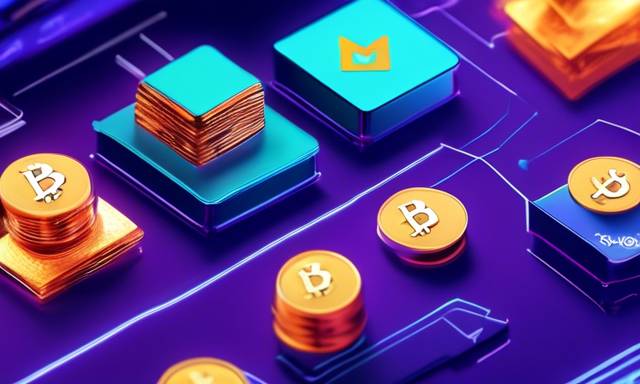Exploring the Future of Cryptocurrencies with Charles Hoskinson 🌐
At the TOKEN2049 conference in Singapore, Charles Hoskinson, the Co-founder and CEO of Input Output (IOHK), elaborated on the anticipated developments in cryptocurrencies. His discussion centered on the evolution of digital assets and their journey towards widespread acceptance. During a conversation with Bloomberg TV’s Annabelle Droulers, Hoskinson shared insights about the strides made in the cryptocurrency arena, the essential challenges that remain, and how Cardano plays a role in the overall crypto landscape.
The Evolution of Cryptocurrency Generations 🔄
Hoskinson noted that we find ourselves in the “mid-phase of the third generation of cryptocurrencies.” He outlined a clear progression across four generations: the introduction of Bitcoin as the first decentralized currency; Ethereum’s emergence in the second generation with smart contracts; and subsequently, the third generation, which includes platforms like Solana, Cardano, Tezos, and Polkadot. This latest generation aims to tackle pressing issues such as scalability, governance, and interoperability. While strides have been made in governance and scalability, he identified privacy and identity as critical barriers preventing substantial investments from entering the market.
Addressing Privacy and Identity Issues 🔑
The matters of privacy and identity are pivotal for achieving broader adoption. These factors facilitate effective regulation and conflict resolution. For instance, identity verification systems would enable users to recover their cryptocurrency should they lose access, while privacy features help businesses secure sensitive information, including health records and confidential contracts. Hoskinson believes that addressing these challenges could create the necessary framework to welcome “the next billion individuals into the cryptocurrency realm” by 2025 or 2026.
Highlights of Cardano’s Advancements 📈
When discussing Cardano, Hoskinson emphasized the platform’s distinctive qualities and its significant journey since its inception in 2015. As it advances through the third generation of cryptocurrencies, Cardano prioritizes scalability, governance, and interoperability. Over the past two years, governance has been a central focus, aimed at fostering decentralized governance structures. This process involves engaging participants from over 100 nations to develop an on-chain constitution that guarantees fair representation in decision-making.
Decentralized Governance vs. Centralized Management ⚖️
Hoskinson remarked that governance in blockchain technology differs fundamentally from traditional product management methodologies. In centralized models, companies like Apple and Microsoft hold total control over their developments. Conversely, decentralized systems—represented by Cardano—require protocol holders to take part in governance processes. Aligning individuals from diverse cultural and geographical backgrounds presents challenges, but is crucial for a sustainable ecosystem.
Real-World Applications through Cardano’s Initiatives 💼
Cardano’s decentralized governance models extend beyond theory. Hoskinson pointed to the Midnight project, which focuses on creating private smart contracts intertwined with identity management. This initiative aims to tackle the final hurdles for business adoption by promoting automated compliance and secure business transactions. He strongly advocates for prioritizing privacy and identity to make cryptocurrencies appealing to businesses, thereby enabling them to confidently engage with blockchain solutions.
Advantages of Decentralized Governance for Institutions 🏛️
In response to a question about Cardano’s governance structure and its implications for institutional adoption, Hoskinson affirmed that it provides significant advantages. The consistency and reliability offered by decentralized governance are vital for institutional interests. By referring to the FTX collapse and the centralized control exercised by its former CEO Sam Bankman-Fried, he cautioned against concentrating power. Decentralization fosters resilience, as no single entity can dominate the ecosystem.
Blockchain Collaboration on the Horizon 🤝
As the conversation turned towards competition among blockchains, especially between Cardano and Solana, Hoskinson proposed that the next generation of cryptocurrencies will push for increased collaboration. He foresees that multi-resource consensus models will incentivize networks to work collaboratively rather than in opposition. Such financial incentives could instill a cooperative atmosphere rather than a competitive one, according to his insights.
The Rapid Growth of the Cryptocurrency Space ⏩
Reflecting on the industry’s rapid expansion, Hoskinson expressed astonishment at how it has transformed over 15 years, growing from a single Bitcoin creator to a massive sector valued between $450 billion and $2 trillion. He attributed this impressive growth to the decentralized nature of blockchain technology, emphasizing that the industry’s future hinges on advancing these coordination methods.
Community Loyalty and Future Potential 🌟
The conversation touched on the topic of token dilution, especially with countless new tokens introduced in 2024. Hoskinson acknowledged the challenge but maintained confidence in Cardano’s long-term value. He highlighted the platform’s zealous community, which is deeply committed to its vision. The decentralized governance structure includes a $600 million treasury that will empower community members to explore strategic growth opportunities, contrasting sharply with projects that experience temporary surges driven by substantial foundational investments.
Hot Take: Commitment Over Profit 🙌
In wrapping up the discussion, Hoskinson reflected on the intrinsic motivation of the Cardano community. Much like the early advocates of Bitcoin, these individuals are not merely in pursuit of financial returns; they hold a sincere belief in the project’s mission and vision. Many supporters recall when ADA was a mere few cents and continue to champion the network regardless of its market price, a testament to their enduring faith in its potential.





 By
By
 By
By

 By
By
